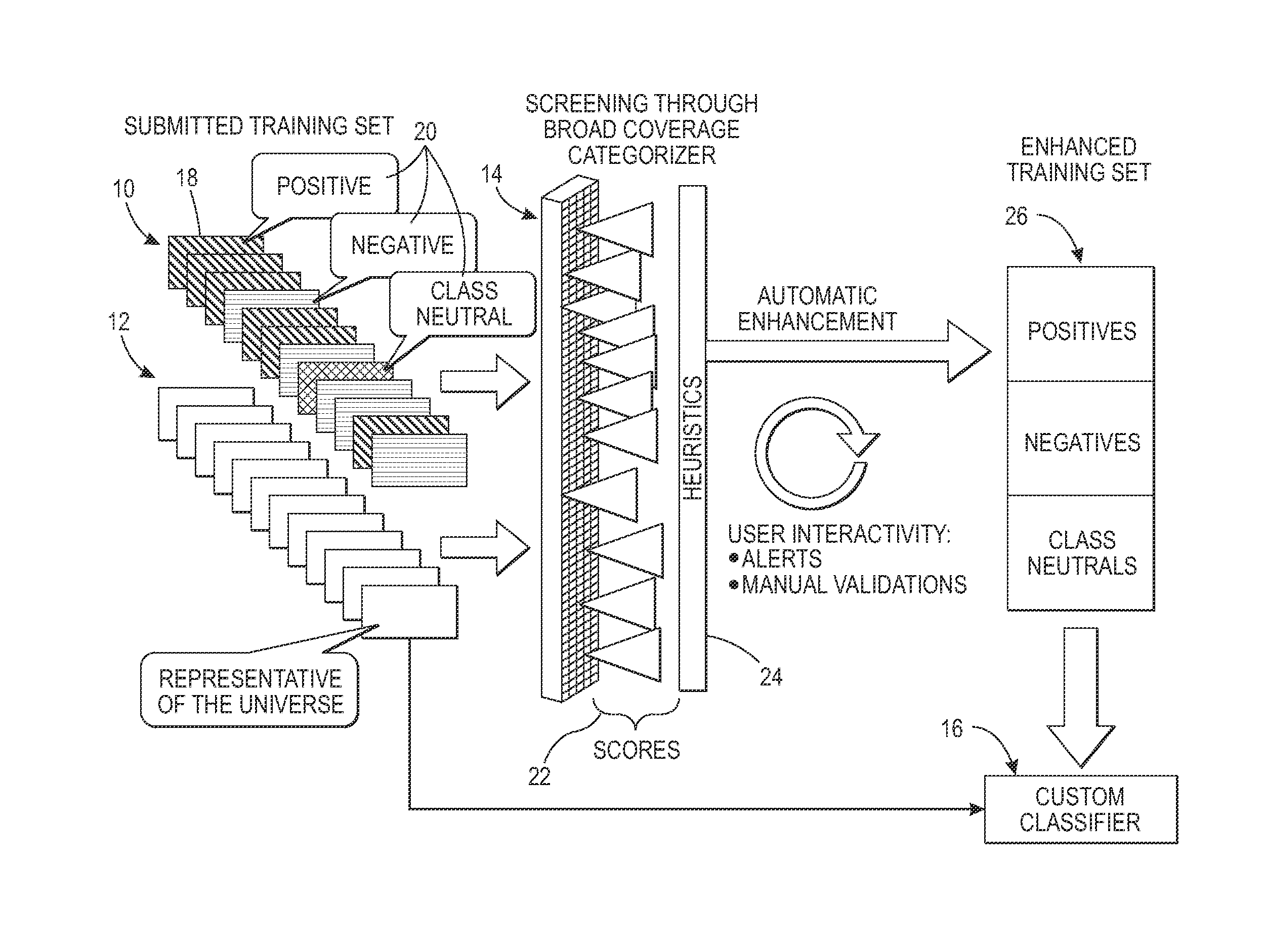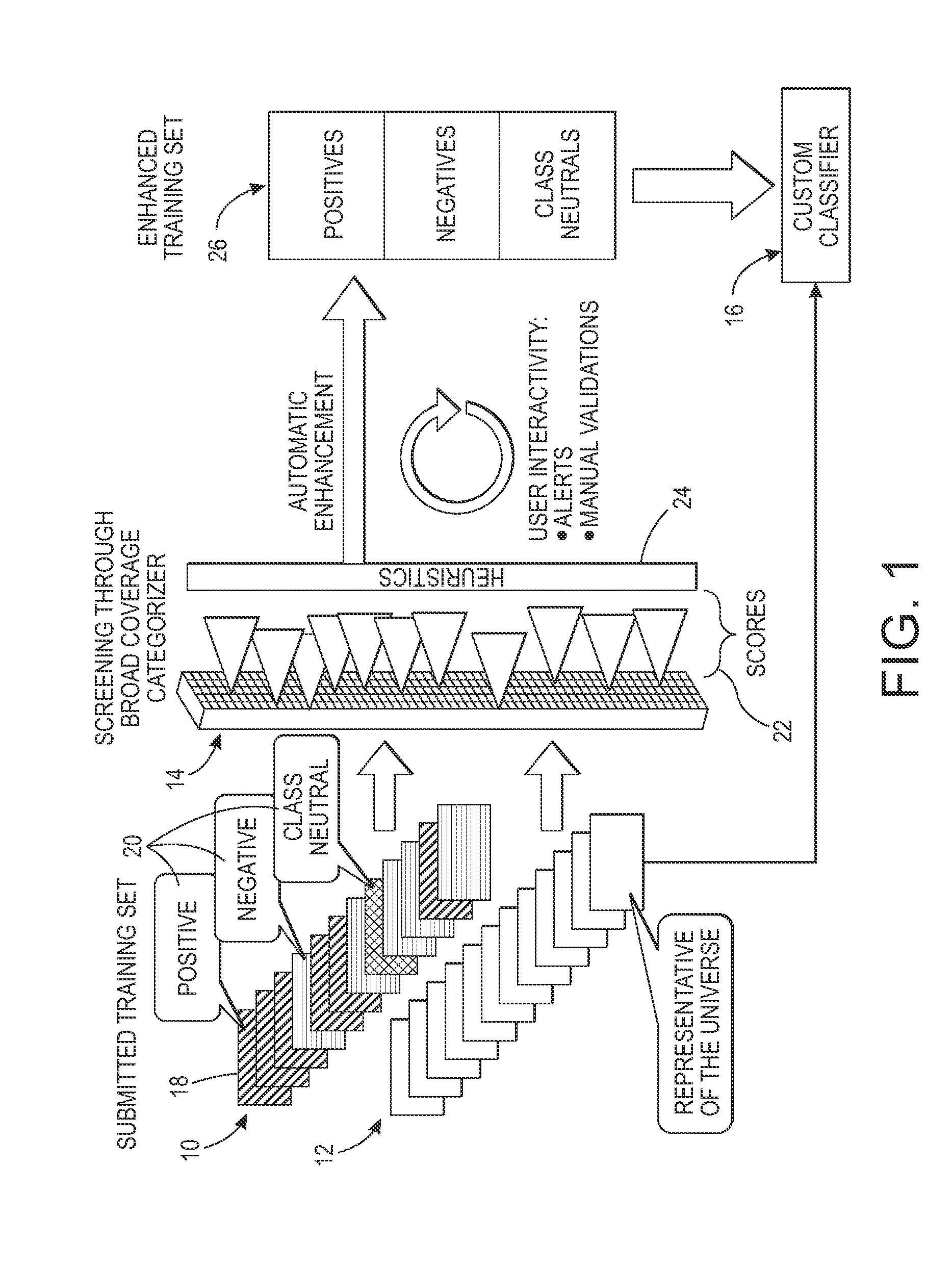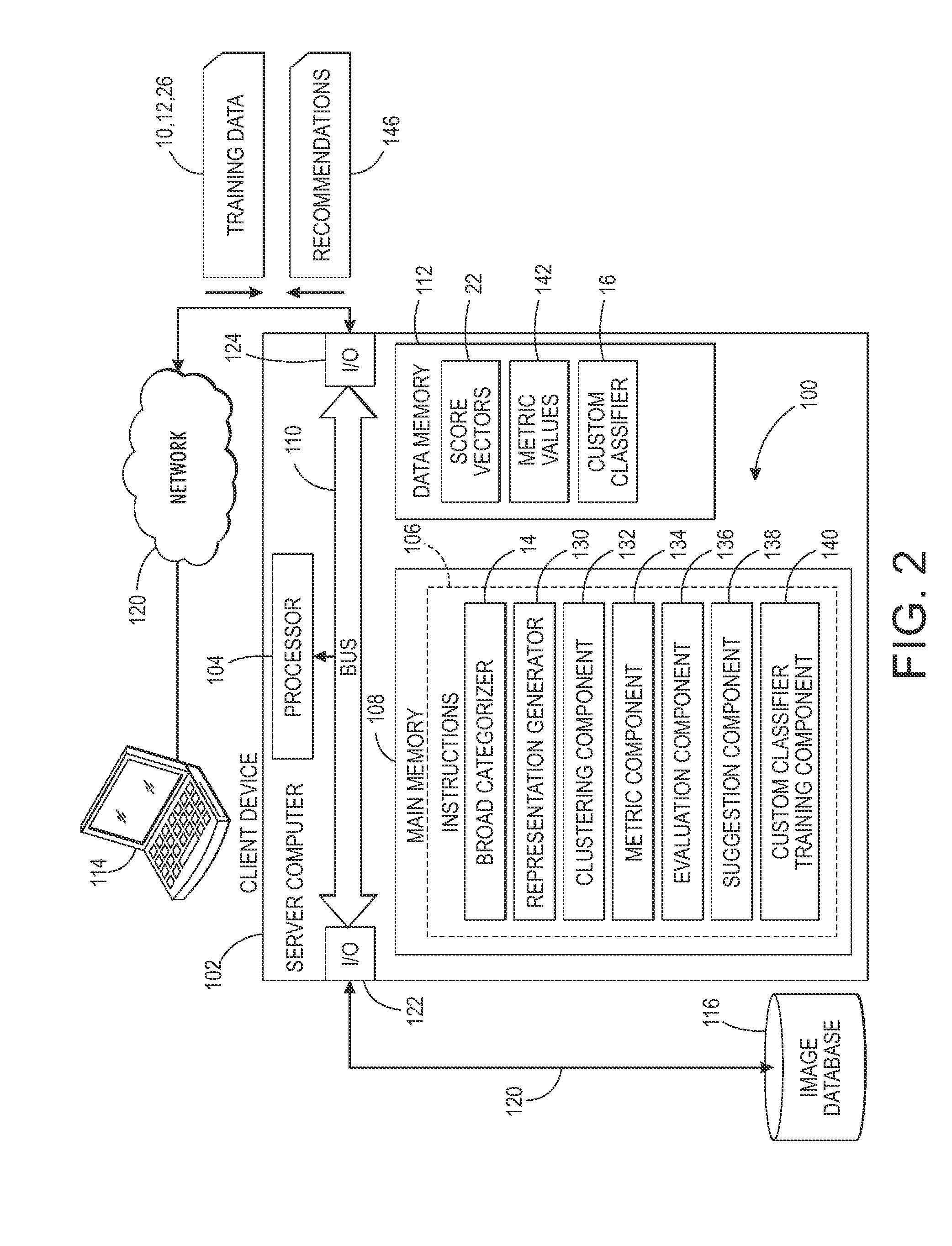Pre-screening training data for classifiers
a training data and classifier technology, applied in the field of information processing arts, information storage arts, document classification arts, can solve the problems of insufficient training data, inability to meet the needs of specific users, and inability to train custom categorizers, as with any classifiers, to achieve the effect of improving training data
- Summary
- Abstract
- Description
- Claims
- Application Information
AI Technical Summary
Benefits of technology
Problems solved by technology
Method used
Image
Examples
Embodiment Construction
[0016]Aspects of the exemplary embodiment relate to a system and method for improving training data to be used to train a categorizer by providing suggestions and feedback to a user who has submitted the training data.
[0017]As used herein a “digital object” (or simply, an “object”) refers to a digital item which is capable of being categorized by a digital object categorizer, based on its content. A digital object can be an image, word processing document, audio file, combination thereof, or the like. In the exemplary embodiment, the objects are digital images, in particular, photographic images, i.e., captured images of real world visual (not digital) objects and scenes or images derived therefrom, although other types of images, such as graphics, maps, scanned documents, and the like are also contemplated. While particular reference is made herein to images, it is to be appreciated that the system and method are not limited to images.
[0018]A “training set” is a collection of digit...
PUM
 Login to View More
Login to View More Abstract
Description
Claims
Application Information
 Login to View More
Login to View More - R&D
- Intellectual Property
- Life Sciences
- Materials
- Tech Scout
- Unparalleled Data Quality
- Higher Quality Content
- 60% Fewer Hallucinations
Browse by: Latest US Patents, China's latest patents, Technical Efficacy Thesaurus, Application Domain, Technology Topic, Popular Technical Reports.
© 2025 PatSnap. All rights reserved.Legal|Privacy policy|Modern Slavery Act Transparency Statement|Sitemap|About US| Contact US: help@patsnap.com



